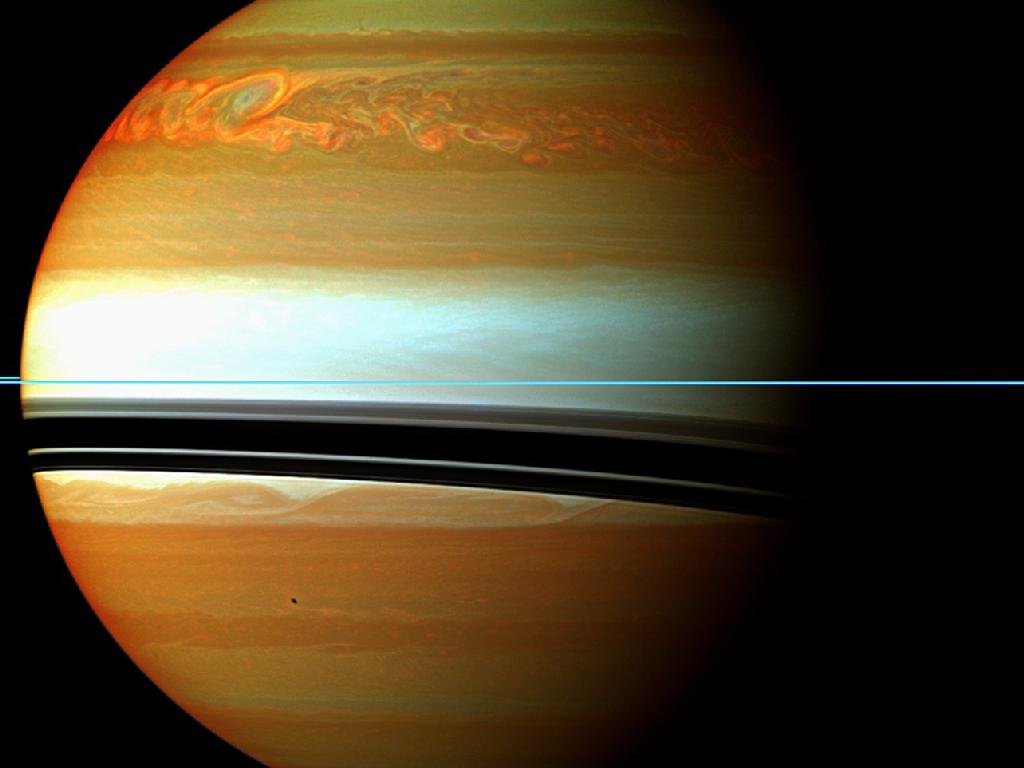Exploring Weather Patterns of Saturn: Study Reveals Hundred-Year Storms and Atmospheric Effects

Monstrous storm weather patterns of Saturn (Photo: Space.com)
Weather Patterns of Saturn – Hundred-Year Storms?
According to the published article of Lake County News, in Berkeley, California, the solar system’s largest storm, known as the Great Red Spot, spanning 10,000 miles, has adorned Jupiter’s surface for numerous centuries.
A recent investigation has unveiled that Saturn, while comparatively less vibrant and vivid than Jupiter, also experiences enduring mega-storms impacting its atmosphere and influencing the intricate weather patterns of Saturn, persisting for centuries.
Conducted by astronomers from the University of California, Berkeley, and the University of Michigan, Ann Arbor, the study focused on radio emissions from Saturn, originating beneath its surface. The researchers identified prolonged disturbances in the distribution of ammonia gas, shedding light on the intricate weather patterns of Saturn.
READ ALSO: Severe Weather Conditions To Hit Central, Easter US Next Week
Unveiling Weather Patterns of Saturn and Atmospheric Phenomena
According to an article from Berkeley News, Saturn’s captivating mega-storms, resembling Earth’s hurricanes but on a much grander scale and occurring every few decades, have intrigued scientists for generations. These awe-inspiring tempests, embedded within Saturn’s predominantly hydrogen and helium atmosphere, hold secrets that extend beyond the mere weather patterns of Saturn.
Lead author Cheng Li, once a 51 Peg b Fellow at UC Berkeley and now an assistant professor at the University of Michigan, emphasizes the broader significance of their findings: “Understanding the mechanisms of the largest storms in the solar system puts the theory of hurricanes into a broader cosmic context, challenging our current knowledge and pushing the boundaries of terrestrial meteorology.”
Employing innovative techniques, Imke de Pater, a seasoned UC Berkeley professor specializing in gas giants, has turned to the Karl G. Jansky Very Large Array in New Mexico to probe Saturn’s enigmatic atmosphere through radio emissions. This approach unveils hidden layers of Saturn’s weather patterns and atmospheric behaviors, shedding light on the complex interplay within its colossal storms and the intricate weather patterns of Saturn.
Ammonia Anomalies: Clues to Ancient Storms
The collaborative study, spearheaded by de Pater, Li, and UC Berkeley graduate student Chris Moeckel, reveals a startling discovery. Saturn’s radio emissions disclose anomalies in ammonia gas concentration, providing a link to past mega-storms in the planet’s northern hemisphere. These anomalies offer a glimpse into the dynamic atmospheric processes, leaving a mark that persists for centuries and influencing the intricate weather patterns of Saturn.
The study’s revelations underscore the fascinating contrast between Saturn and its neighboring gas giant, Jupiter. As both consist primarily of hydrogen gas, their divergent mega-storm behaviors challenge current understanding and open doors for exploring these intricate phenomena across celestial bodies throughout the universe.
READ ALSO: Fundamentals Of Investing A Newbie Must Know









